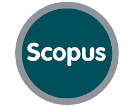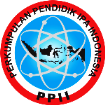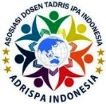Development of an E-Module Based on Multiple Representation Integrated with Islamic Education to Improve Scientific Literacy and Learning Independence of Students on Buffer Solution Material
Abstract
This study aims to develop a multiple-representations-based e-module to enhance students’ scientific literacy and learning autonomy in the topic of buffer solutions. The research employed a Research and Development (R&D) methodology using the ADDIE model, which includes the stages of analysis, design, development, implementation, and evaluation. Expert validation and limited trials involving teachers and students from three senior high schools in Pekanbaru were conducted to assess the e-module. The results indicate that the e-module is valid, practical, and effective in improving both conceptual understanding and learners’ autonomy. Beyond enhancing academic performance, the integration of multiple representations enables students to interrelate macroscopic, submicroscopic, and symbolic levels of chemical concepts. Moreover, the e-module incorporates Islamic educational values, emphasizing the integration of scientific knowledge with spiritual and ethical dimensions to foster holistic learning. These findings suggest that representation-based digital learning tools can serve as an effective strategy for promoting scientific literacy and self-regulated learning in chemistry education.
Keywords: e-module, multiple representation, scientific literacy, learning independence, buffer solutions, islamic education.
Full Text:
PDFReferences
Aji, R. H. S. (2020). Dampak Covid-19 pada Pendidikan di Indonesia: Sekolah, Keterampilan, dan Proses Pembelajaran. Salam: Jurnal Sosial dan Budaya Syar-i, 7(5), 395–402. https://doi.org/10.15408/sjsbs.v7i5.15314
Al-Attas, S. M. N. (2018). The Concept Of Education In Islam: A Framework For An Integrated Approach. Kuala Lumpur: ISTAC.
Ardianto, D., & Rubini, B. (2016). Comparison of Students’ Scientific Literacy in Integrated Science Learning Through Model of Guided Discovery and Problem Based Learning. Jurnal Pendidikan IPA Indonesia, 5(1), 99–105. https://doi.org/10.15294/jpii.v5i1.5786
Devi, N. D. C., Susanti, E., & Indriyanti, N. Y. (2018). Analisis Kemampuan Argumentasi Siswa SMA pada Materi Larutan Penyangga. Jurnal Kimia dan Pendidikan Kimia, 3(3), 152–159. https://doi.org/10.20961/jkpk.v3i3.23308
Fatmawati, A. (2016). Pengembangan Perangkat Pembelajaran Konsep Pencemaran Lingkungan menggunakan Model Pembelajaran berdasarkan Masalah untuk SMA Kelas X. Jurnal Edusains, 4(2), 94–103. 3. https://doi.org/https://doi.org/10.23971/eds.v4i2.512
Fitriana, E. A., & Mulyono, R. (2023). Peningkatan Kemandirian Belajar melalui Layanan Bimbingan Kelompok. Syntax Literate: Jurnal Ilmiah Indonesia, 8(5), xx-xx. https://doi.org/10.36418/syntax-literate.v8i5.12187
Fuadi, F., Gani, A., & Syukri, M. (2020). The Relationship Between Scientific Literacy and Students’ Critical Thinking Skills. Journal of Physics: Conference Series, 1460(1), 012119. https://doi.org/10.1088/1742-6596/1460/1/012119
Fuadi, H., Robbia, A. Z., Jamaluddin, J., & Jufri, A. W. (2020). Analisis Faktor Penyebab Rendahnya Kemampuan Literasi Sains Peserta Didik. Jurnal Ilmiah Profesi Pendidikan, 5(2), 108–116. https://doi.org/10.29303/jipp.v5i2.122
Hadi, S., Rahman, R. A., Abdullah, K., & Musyoddiq, M. D. (2021). The Role of Religion in Educational Science; an Analysis Toward the Modern Science. At-Ta’dib: Journal of Pesantren Education, 16(2), 235–247. https://doi.org/10.21111/at-tadib.v16i2.6895
Hake, R. R. (1998). Interactive-Engagement Versus Traditional Methods: A Six-Thousand-Student Survey Of Mechanics Test Data For Introductory Physics Courses. American Journal of Physics, 66(1), 64–74. https://doi.org/10.1119/1.18809
Harefa, N., Fransisca, N., & Silalahi, D. (2020). Improvement of Students’ Learning Outcomes and Motivation with Chemical Practicum E-Module. Jurnal Pendidikan Kimia, 12(1), 10–19. https://doi.org/10.24114/jpkim.v12i1.17708
Kemendikbud. (2017). Kurikulum 2013 (K-13) revisi 2017: Kompetensi inti dan kompetensi dasar SMA/MA. Kementerian Pendidikan dan Kebudayaan Republik Indonesia.
Linda, R., Zulfarina, Mas’ud, & Teja, P. (2021). Peningkatan Kemandirian dan Hasil Belajar Peserta Didik melalui Implementasi E-Modul Interaktif IPA Terpadu Tipe Connected pada Materi Energi SMP/Mts. Jurnal Pendidikan Sains Indonesia, 9(2), 197–198. https://doi.org/10.24815/jpsi.v9i2.19012
Nadia, D., Saadi, S., & Leny, R. (2023). Pengembangan E-Modul Kimia Berbasis Multiple Representasi pada Materi Hidrolisis Garam untuk Meningkatkan Kemandirian Belajar Peserta Didik. Journal of Chemistry and Education (JCAE), 7(1), 12–22. https://doi.org/10.20527/jcae.v7i1.1969
Nugraha, D. A., Purnamasari, I., & Rahayu, W. (2020). Curriculum Alignment and 21st-Century Skills in Science Learning: A Conceptual Analysis. Jurnal Pendidikan IPA Indonesia, 9(4), 512–522. https://doi.org/10.15294/jpii.v9i4.26711
OECD. (2023). PISA 2022 results (Volume I): The state of learning outcomes in education. Organisation for Economic Co-operation and Development. https://doi.org/10.1787/14d9c88c-en
Puspitasari, E., & Yuliana, A. T. R. D. (2022). Syed Muhammad Naquib Al-Attas’ Concept of Islamizing Science and its Relevance to Islamic Education. Al-Misbah (Jurnal Islamic Studies), 10(2), 91–108. https://doi.org/10.26555/almisbah.v10i2.6484
Puspita Sari, Y., & Silfianah, I. (2023). E-LKPD Interaktif Berbasis Multipel Representasi Ppada Materi Laju Reaksi. Jurnal Inovasi Pendidikan Kimia, 18(1), 46–59. https://doi.org/10.15294/jipk.v18i1.46498
Rahmawati, N., & Prasetyo, Z. K. (2021). Enhancing Chemistry Learning Through Digital-Based Modules: Implications For Students’ Independence. Journal of Science Education Research, 5(2), 98–108. https://doi.org/10.21831/jser.v5i2.40218
Sari, D. P., & Prasetyo, Z. K. (2022). Strengthening Students’ Scientific Literacy Through Contextual and Digital-Based Science Learning. Journal of Science Education Research, 6(2), 105–115. https://doi.org/10.21831/jser.v6i2.50120
Suyidno, Fitriyani, Miriam, Mahtari, & Siswanto. (2022). STEM – Problem Based Learning: Pembelajaran Inovatif untuk Meningkatkan Literasi Sains Siswa di Era Industri 4.0. Jurnal Penelitian Pembelajaran Fisika, 13(2), 101–110. https://doi.org/10.26877/jp2f.v13i2.10402
Sukiman. (2011). Pengembangan Media Pembelajaran. Yogyakarta: Pedagogia.
Sunyono. (2015). Model Pembelajaran Multipel Representasi. Media Akademik.
DOI: http://dx.doi.org/10.24014/jnsi.v8i2.26995
Refbacks
- There are currently no refbacks.

Journal of Natural Science and Integration
E-ISSN: 2620-5092 P-ISSN: 2620-4967
Published By:
Department of Science Education, Faculty of Education and Teacher Training,
State Islamic University of Sultan Syarif Kasim Riau, Indonesia
Mailing Address:
Jl. H.R Soebrantas Km. 15 No. 155
Kelurahan Simpang Baru
Kecamatan Tuah Madani, Pekanbaru, Riau, Indonesia
Email: jnsi.tadrisipa@uin-suska.ac.id
Indexed By:
Journal of Natural Science and Integration is licensed under a Creative Commons Attribution 4.0 International License.


_-_Copyy2.png)






.jpg)
.png)
.jpg)
.jpg)




